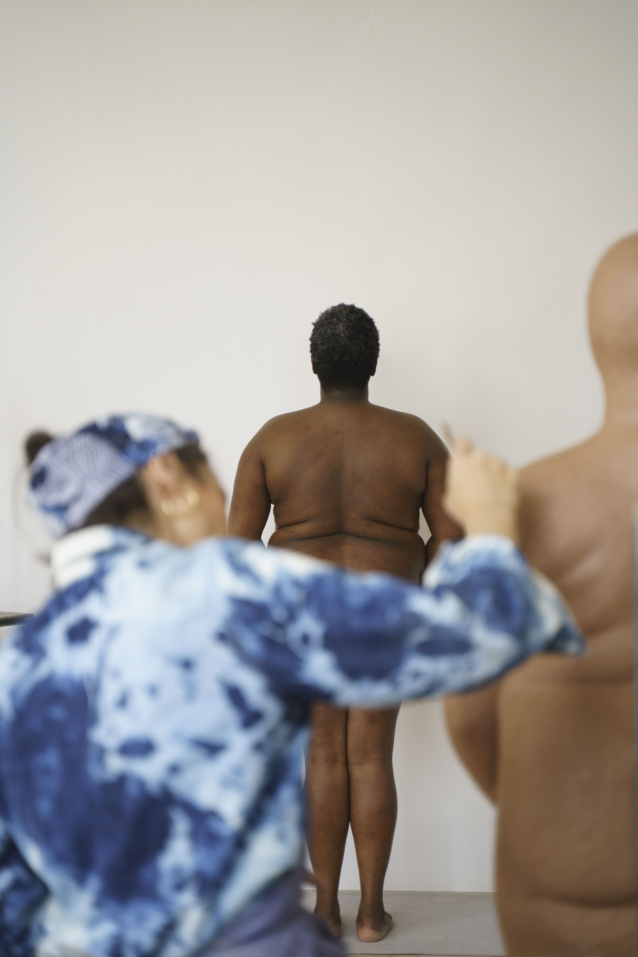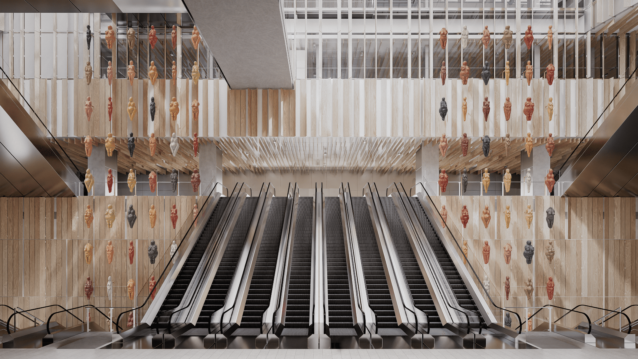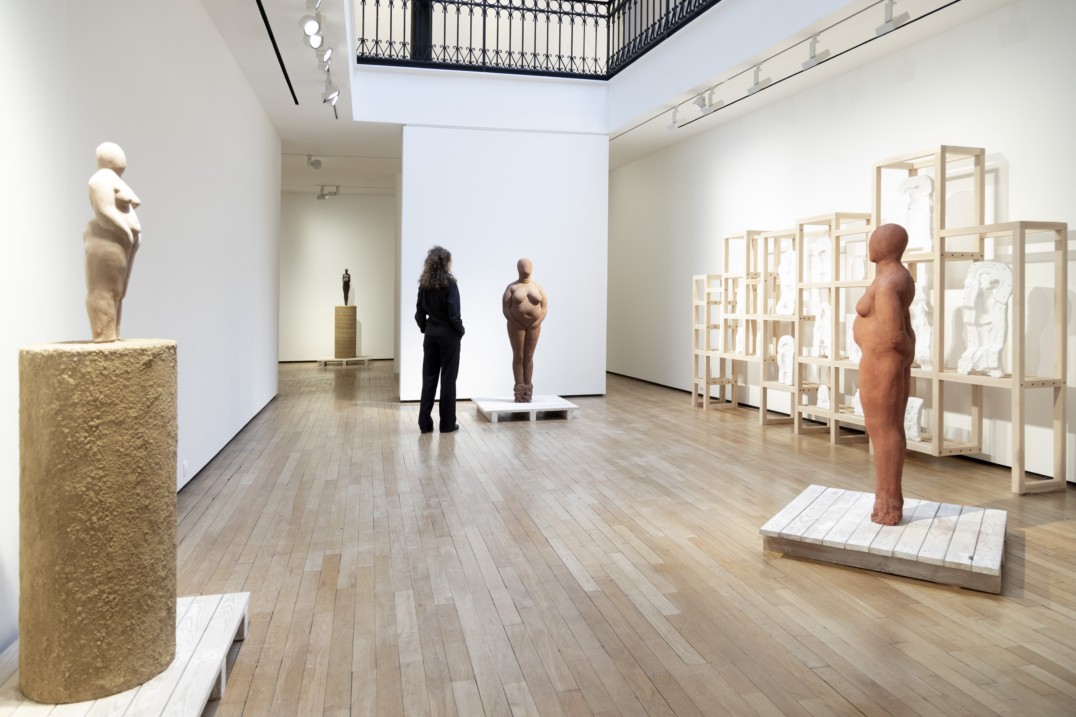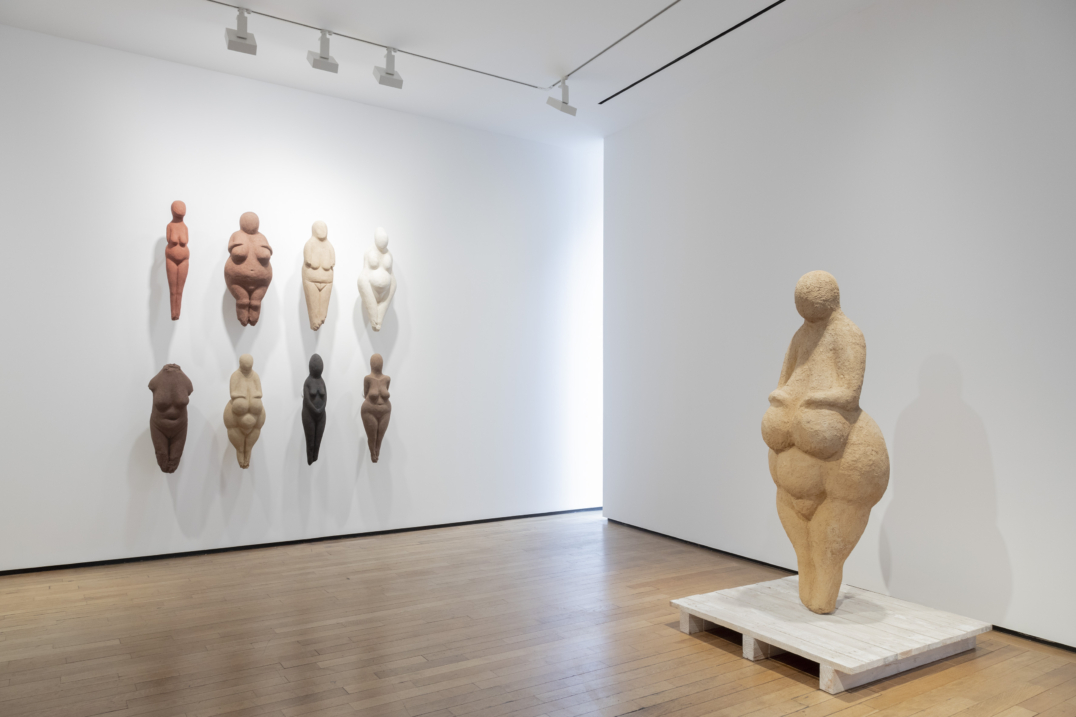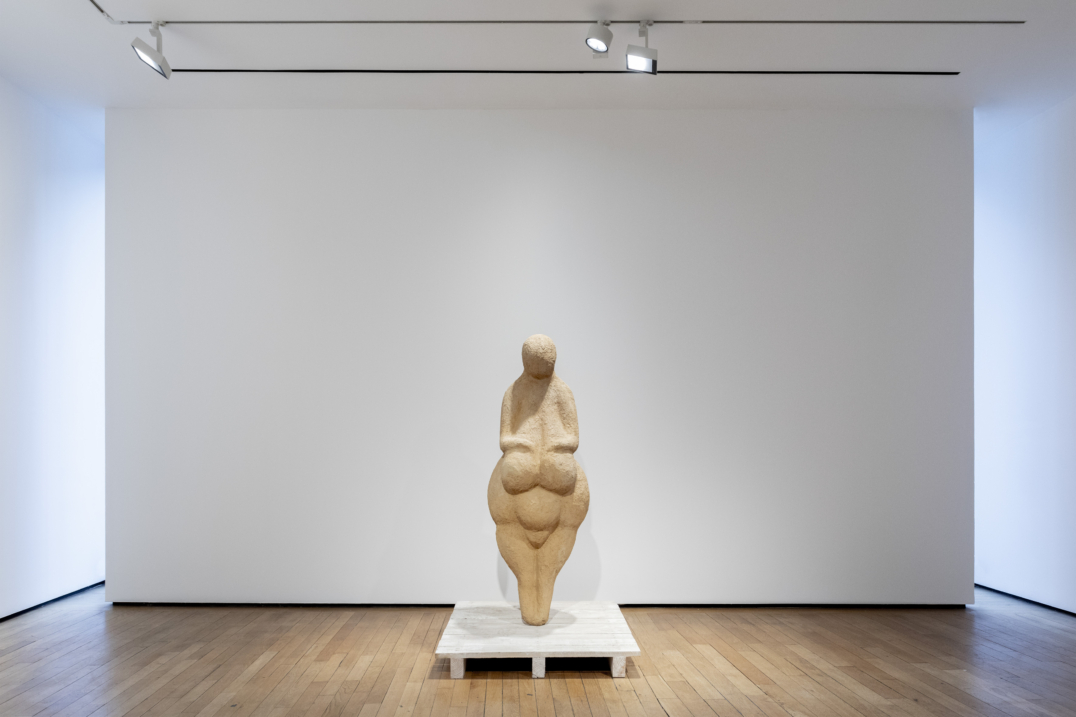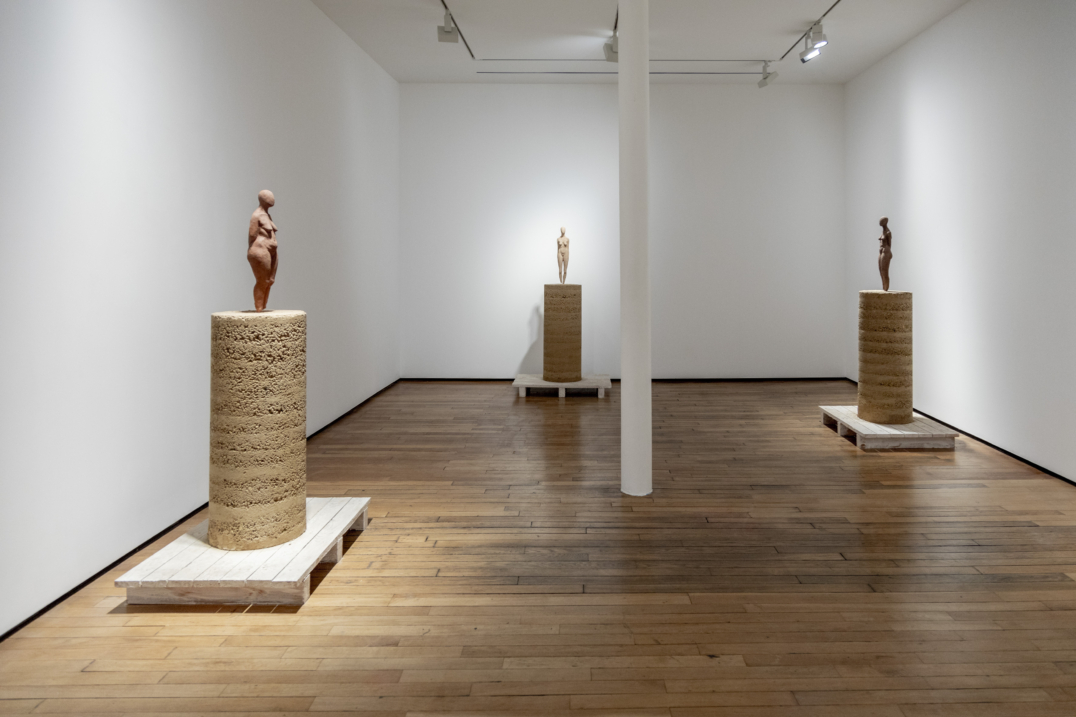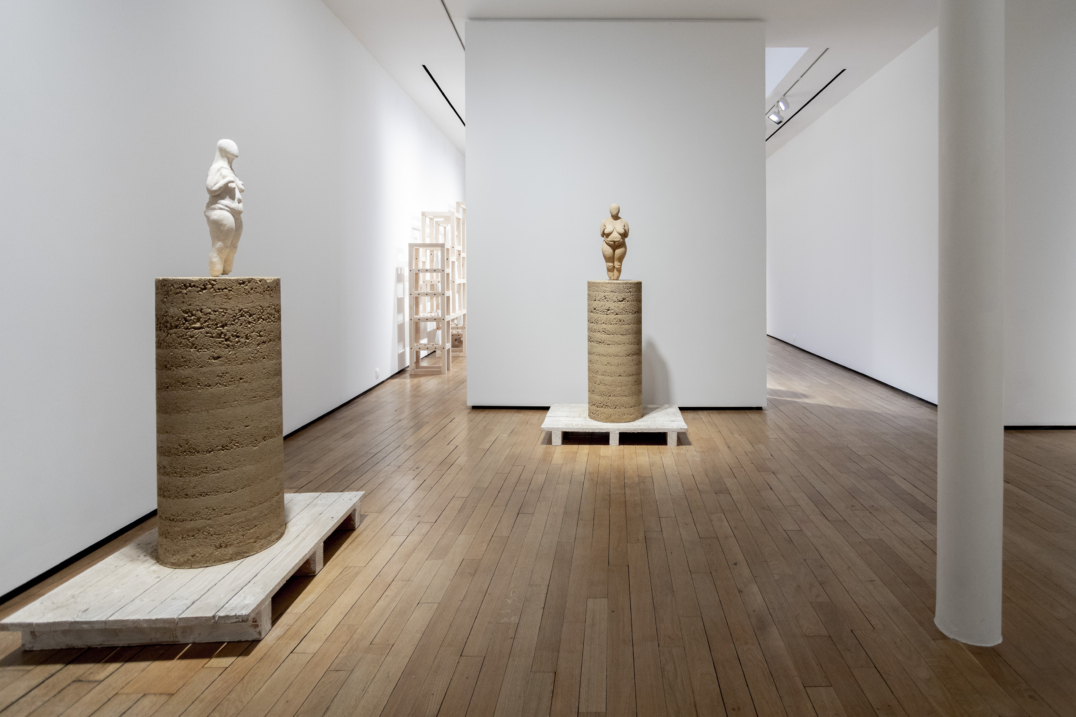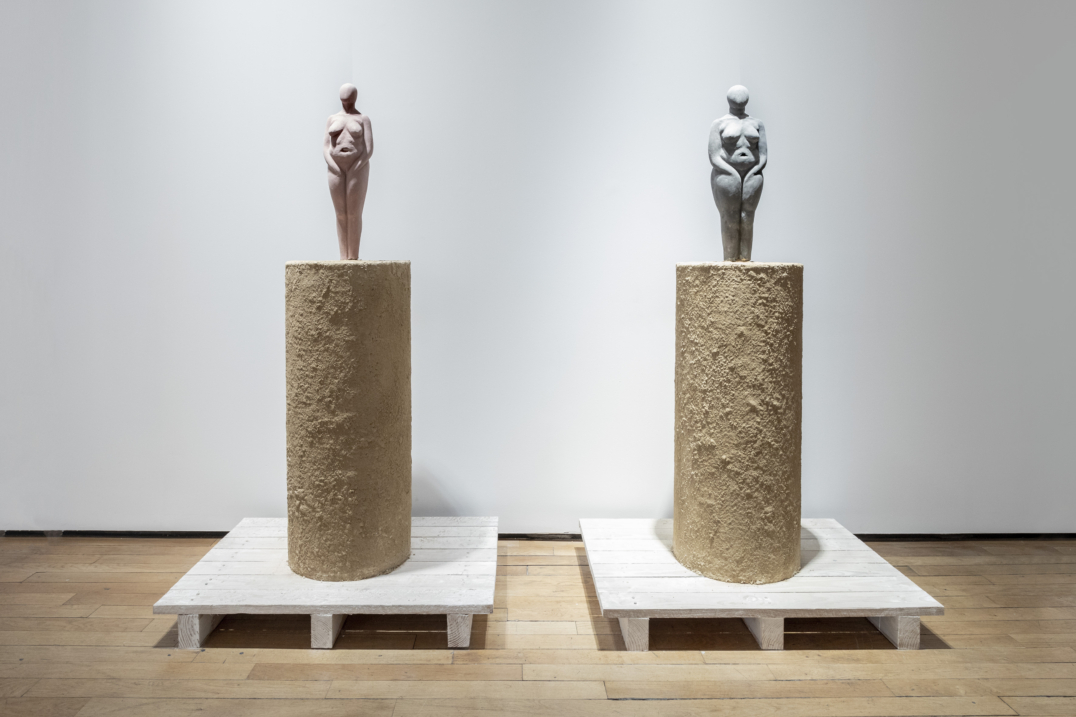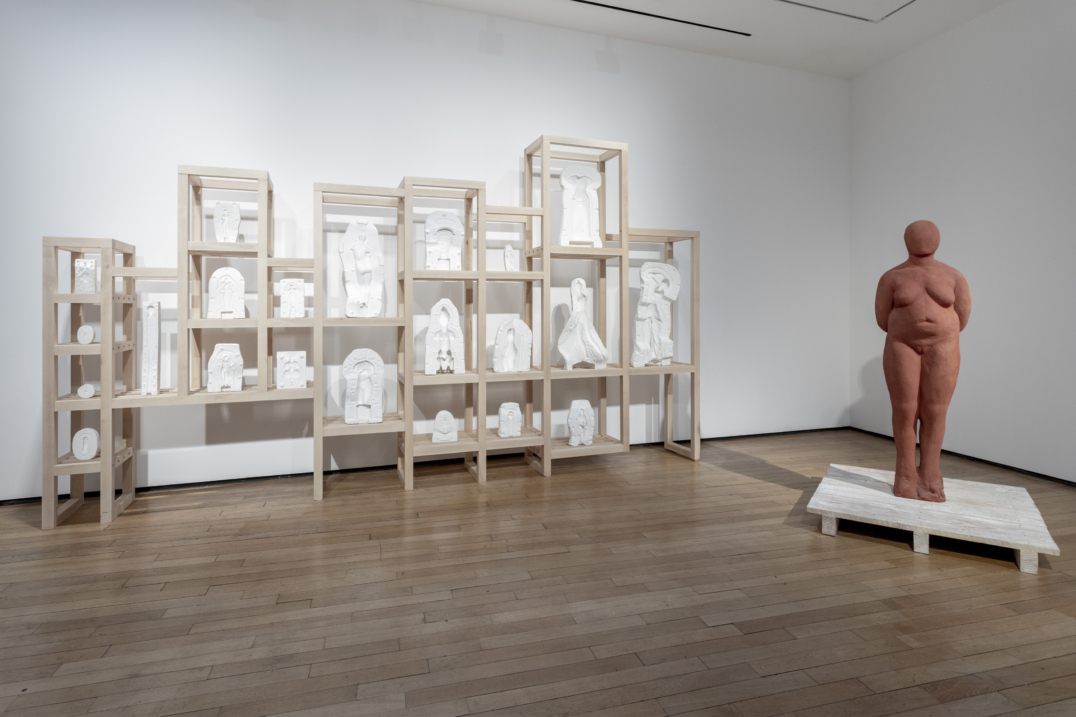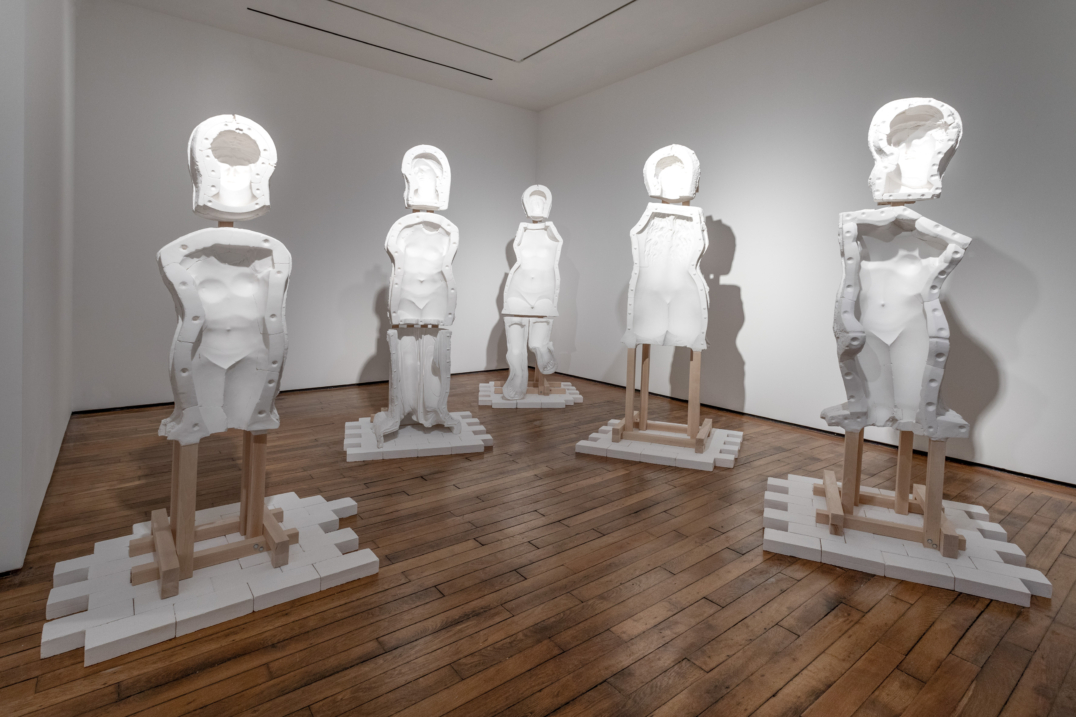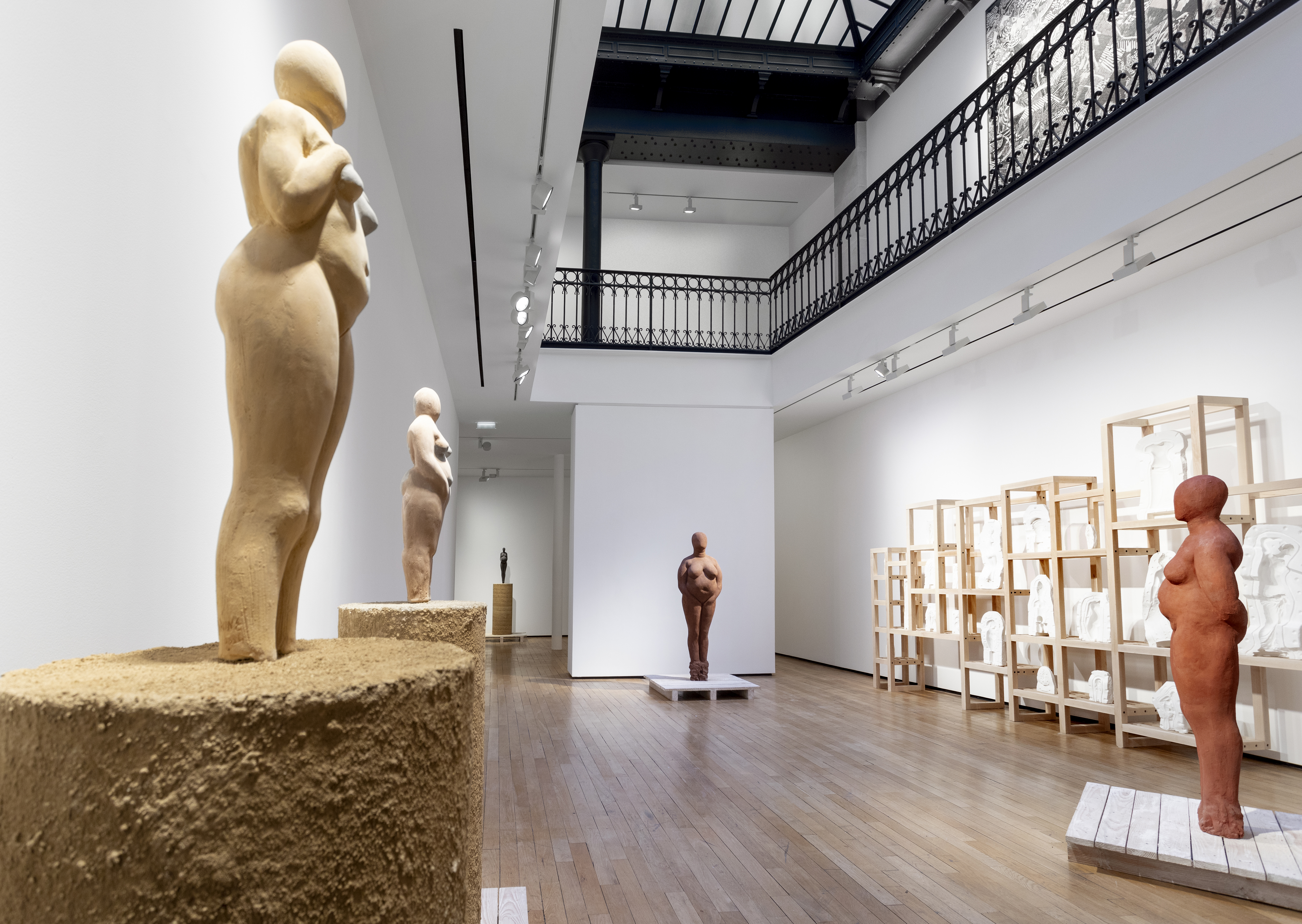
Prune Nourry
Venus
Following on from solo exhibitions in Brussels in 2017 and 2022 and Paris in 2019 and 2021, TEMPLON Paris is thrilled to invite Prune Nourry in his large space.
This exhibition was partly produced thanks to a partnership with the Atelier de moulage du GrandPalaisRmn in Saint-Denis.
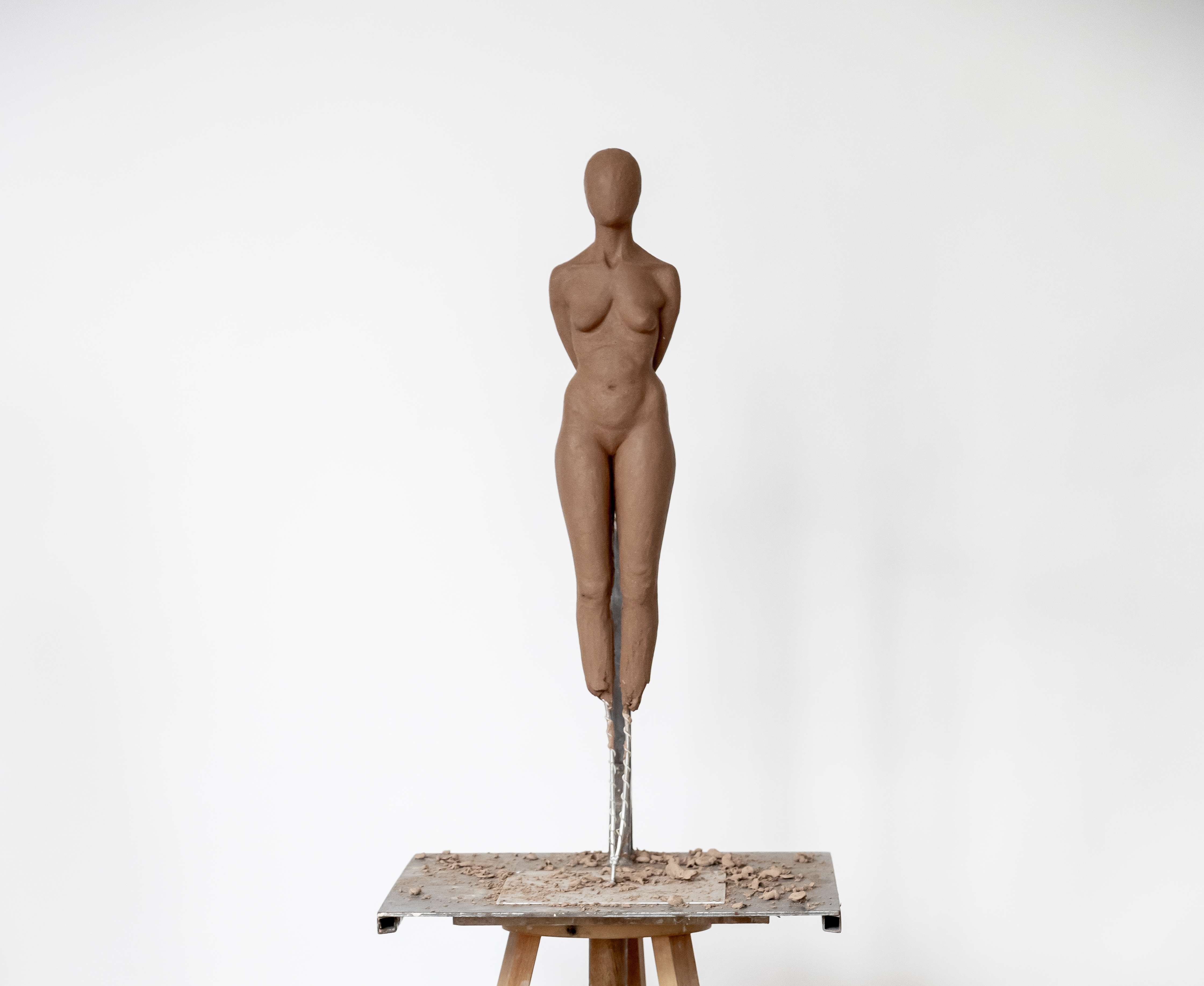
The Venus project is the fruit of Prune Nourry’s encounter with Ghada Hatem, a gynaecologist and obstetrician who founded the Maison des Femmes in Saint-Denis, a support centre for women who are victims of violence. The centre is part of a hospital and offers women in Seine-Saint-Denis who are struggling multi-disciplinary support and care. The artist met eight women at the centre’s workshops (that cover areas such as literacy, theatre and dance) who agreed to pose naked for her, courageously overcoming social taboos related to their culture or personal taboos rooted in their traumas. Echoing her approach with Projet Phenix in 2021, Prune Nourry chose to revive the tradition of portraiture as she sculpted in an even more intimate setting, between a woman sculptor and a woman model. The artist drew on each woman’s unique story – the women who wished to do so told her about their lives during the sittings – and diverse body shapes to model clay busts of them in the style of prehistoric Venus statues. Their words inspired each work just as much as the details of their bodies. The portraits, human-sized or small-scale, were then moulded before being cast in bronze covered in a layer of clay, or cast in terracotta.
Prune Nourry asked the women models to strike the same poses, static and standing, as the Venus figurines of the past. A choice rooted in various encounters (including with Catherine Schwab, chief heritage curator in charge of the Palaeolithic and Mesolithic collections at the Musée d’Archéologie nationale in Saint-Germain-en-Laye, who is from Seine-Saint-Denis) and her research into Palaeolithic Venuses (from the Gravettian period) which she began in late 2022 to prepare the piece she created in tandem with Kengo Kuma for Saint-Denis – Pleyel station.
The past and present, personal and universal are inextricably linked throughout the project, a theme that is a wellspring of the sculptor’s work as illustrated by her exhibition at the Musée National des Arts Asiatiques (Guimet) in Paris in 2017.
Creation myths and clay are central to Prune Nourry’s work. In 2023 she inaugurated a permanent installation at the Château La Coste, Mater Earth, the name referring to the Latin root for “mother” and “maternity” but also the “matter” that is clay. She has been involved in a collaborative project since 2022, Statues Also Breathe, with the Ile-Ife University in Nigeria inspired by the Yoruba creation myth. Steeped in oral tradition and predating written monotheistic religions, the myth recounts how humanity was sculpted from the clay of Ife. Another long-term project she has been working on since 2011 is Terracotta Daughters, an army of little girls made of terracotta, life-size figures that are buried in a secret location in China where they will stay until 2030.
Prune Nourry’s design of the Galerie Templon exhibition is tied to the Les Vénus dionysiennes commission she undertook in tandem with architect Kengo Kuma for the Grand Paris Express metro line in the Saint-Denis – Pleyel station inaugurated in June 2024. The commission, supported by Société des Grands Projets under the artistic and cultural direction of José-Manuel Gonçalvès with CENTQUATRE-PARIS and the Eva Albarran & Co. agency, will be installed in 2026.
To embed herself in Saint-Denis before the installation, Prune Nourry decided to move her studio from April to July 2024. Saint-Denis district council invited her to take up an arts residency in Villa D., a former shelter for girls and future art centre. It was there that she invited the women for their sittings, with the Maison des Femmes close by.
Prune Nourry fills the gallery space with sculptures that evoke the Vénus dionysiennes she created for Saint-Denis – Pleyel station: a series of eight small bronzes with a patina resembling clay as well as a life-size prototype of Venus (170 cm) to underscore the monumental scale of the future installation in the station’s atrium.
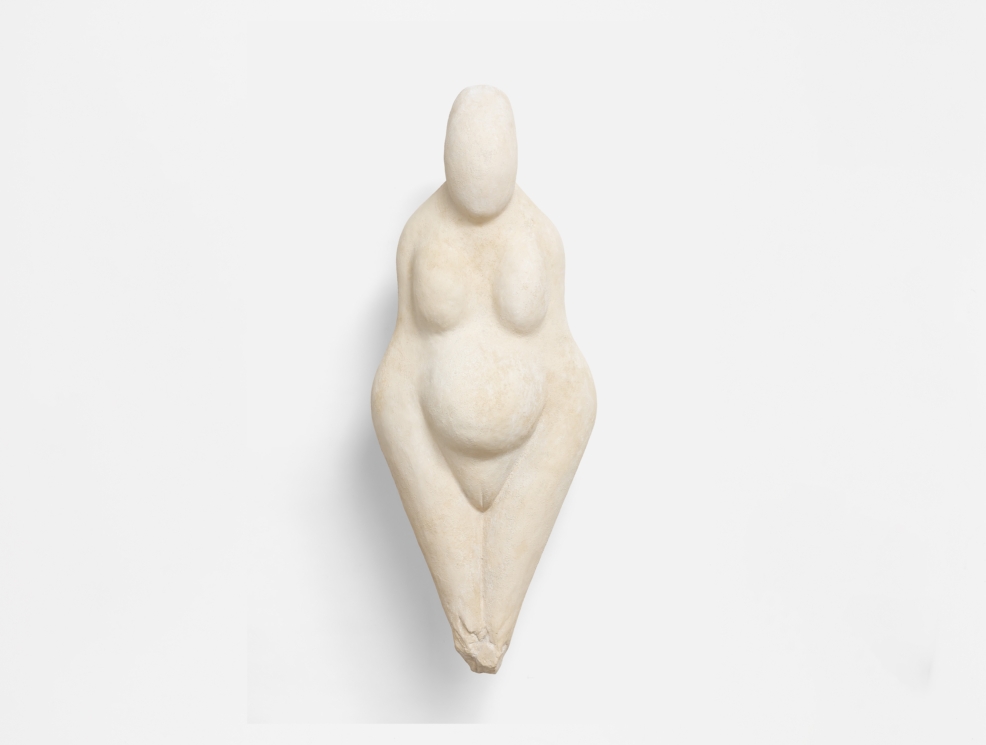
Mini-Vénus #4 bronze (de Grimaldi / Losange)
In the basement is an installation made up of thirty moulds produced at the Saint-Denis Atelier de moulage du GrandPalaisRmn, a custodian of cultural heritage and unique crafts and a living record of the entire history of world sculpture. Prune Nourry made a careful selection from the workshop’s collection of moulds to create her own sculptures. She chose different representations of the divine feminine, assembled in hybrid form or pieced together to trace the history of art of Venus, from prehistory to the 20th century on several continents. The workshop supported her artistic project by giving her access to its collection, its teams’ specialist skills and its craftworkers’ age-old expertise.
The documentary film shown as part of the exhibition portrays the relationship between the artist and her models as well as the creative process. It was made by Vincent Lorca (who documents her work: L’Amazone Érogène, Projet Phenix, Mater Earth and Statues Also Breathe) in association with the Femmes à la Caméra collective.
These past and present Venuses thus remind us that, transcending the sculptures’ varying shapes and origins and the many hues of the clay used to make them, we all come from the same earth and will return to the earth.
In parallel, Prune’s new monograph, Corpus, will be published by Éditions de La Martinière in February 2025. This 250-page bilingual French/English book includes numerous visuals of the artist’s work, as well as a conversation with Catherine Grenier and a foreword by George Lucas. The graphic design is by Agnès Dahan Studio. A book signing session will be held at the gallery (28 rue du Grenier-Saint-Lazare) on February 13 at 6pm.
Header : Prune Nourry in the Saint-Denis studio. Photo © Eléa-Jeanne Schmitter, 2024
Seconde image : View of the studio, Paris, 2024. Photo © Laurent Edeline
Fifth image : Mini-Vénus #4 Bronze (De Grimaldi / Losange), 2024, bronze, 80 x 30 x 30cm, Edition of 3 + 2 AP. (detail) © Laurent Edeline
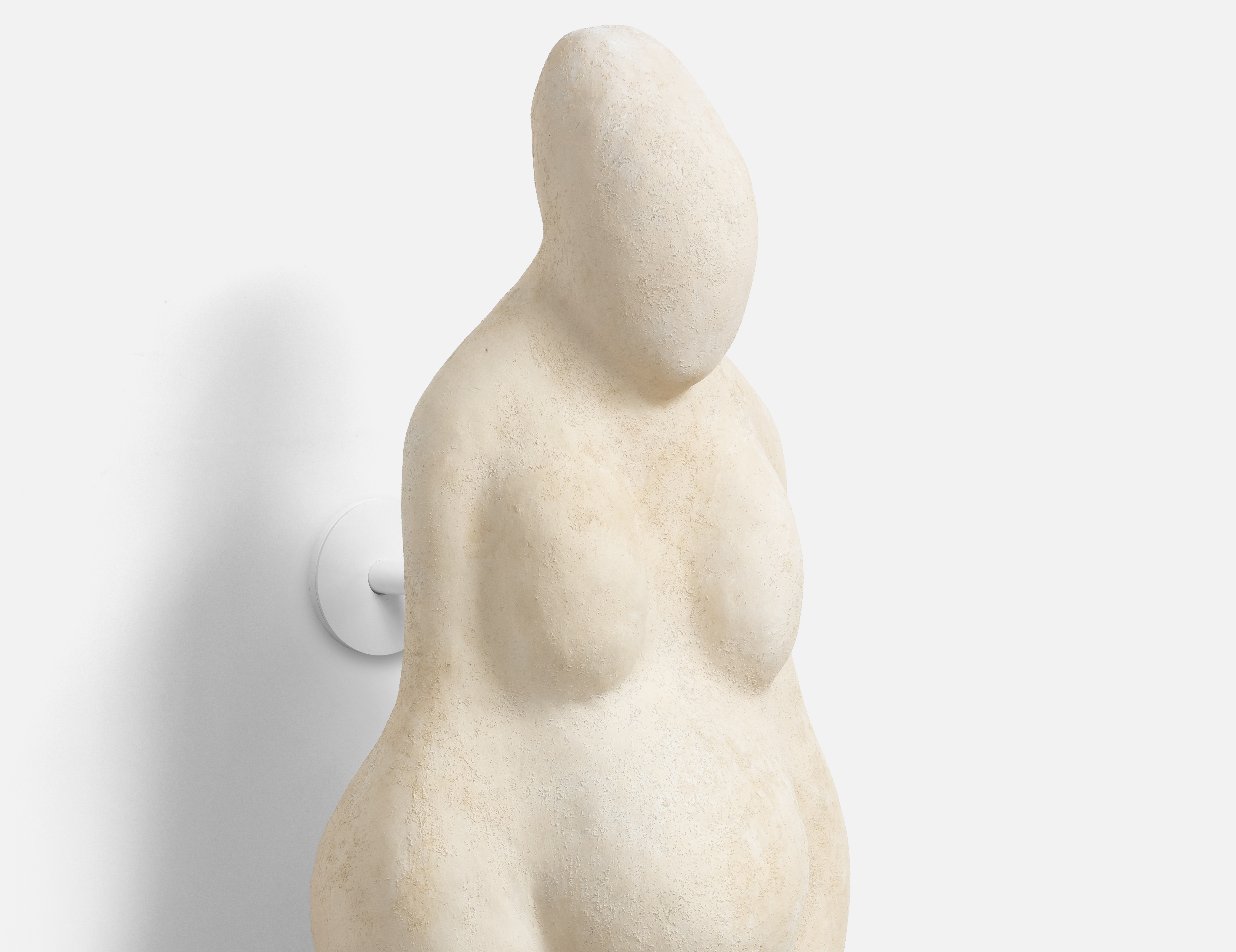
The artist
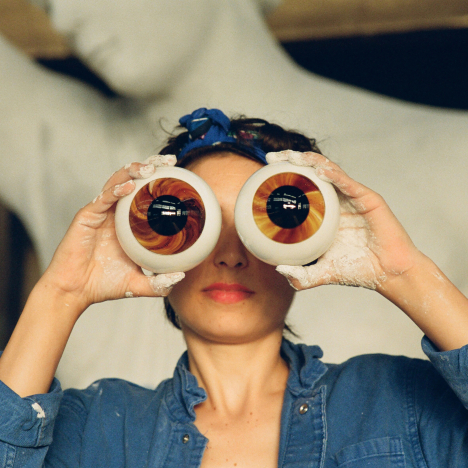
Born in 1985 in Paris, Prune Nourry lives and works in New York. She is interested in the fields of science and anthropology, particularly bioethical questions relating to gender selection and the artificial evolution of humankind. She explores these issues with an artistic approach that combines sculpture, installations, performances and video. Over the last few years, the artist has gained recognition for her long-term projects, such as the Terracotta Daughters army, inspired by the Xi’an terracotta warriors. The piece travelled the world between 2013 and 2015, from Paris to China and taking in Zurich, New York and Mexico City.
